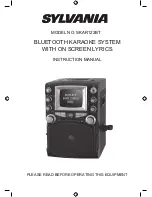
FUSION SPLICER 90S Rev5
39
“Good” message
Arc power and splicing position calibration have successfully completed.
Press RESET key to exit.
“Not adequate” message
Arc power and splicing position calibration are completed but further
calibration is strongly recommended, as the change from the previous arc
calibration is too large.
Press SET key to perform arc calibration, or RESET key to exit (arc
calibration is not completed).
Splicing procedure
To make a good splice, the optical fiber is observed with the image processing
system equipped in the fusion splicer. However, there are some cases when the
image processing system cannot detect a faulty splice. Visual inspection with the
monitor is often necessary for better splicing yield. The instruction below
describes standard operating procedure.
1.
Fibers loaded in the fusion splicer move forward toward each other. The
fiber forward motion stops at a certain position shortly after the cleaning
arc is performed.
2.
Next, the cleave angle and fiber angle are checked. If the measured
cleave angle is greater than its set threshold or fiber chipping is detected,
the buzzer will sound and an error message warns the operator.
In some cases, multiple iterations of arc calibration are needed until
the calibration process is successfully completed and the "Good"
message is displayed.
A number threshold can be set so that a "Test Finish" message is
displayed after specific number of arc calibrations is performed.
See section [Maintenance Settings] for detail
Result: Good
Result: Not Adequate
Use standard SMF ITU-T G652, G655 or G657 fiber for Arc
Calibration.
Use well prepared fibers for arc calibration. Dust on the fiber
surface affects arc calibration.
Cleave angle threshold does not link to the parameter
"Cleave Limit" in splicing modes. Cleave angle threshold is
independently set for arc calibration. See section
[Maintenance Settings] to change cleave angle threshold.
Fiber angle
Left and Right cleave angle
















































